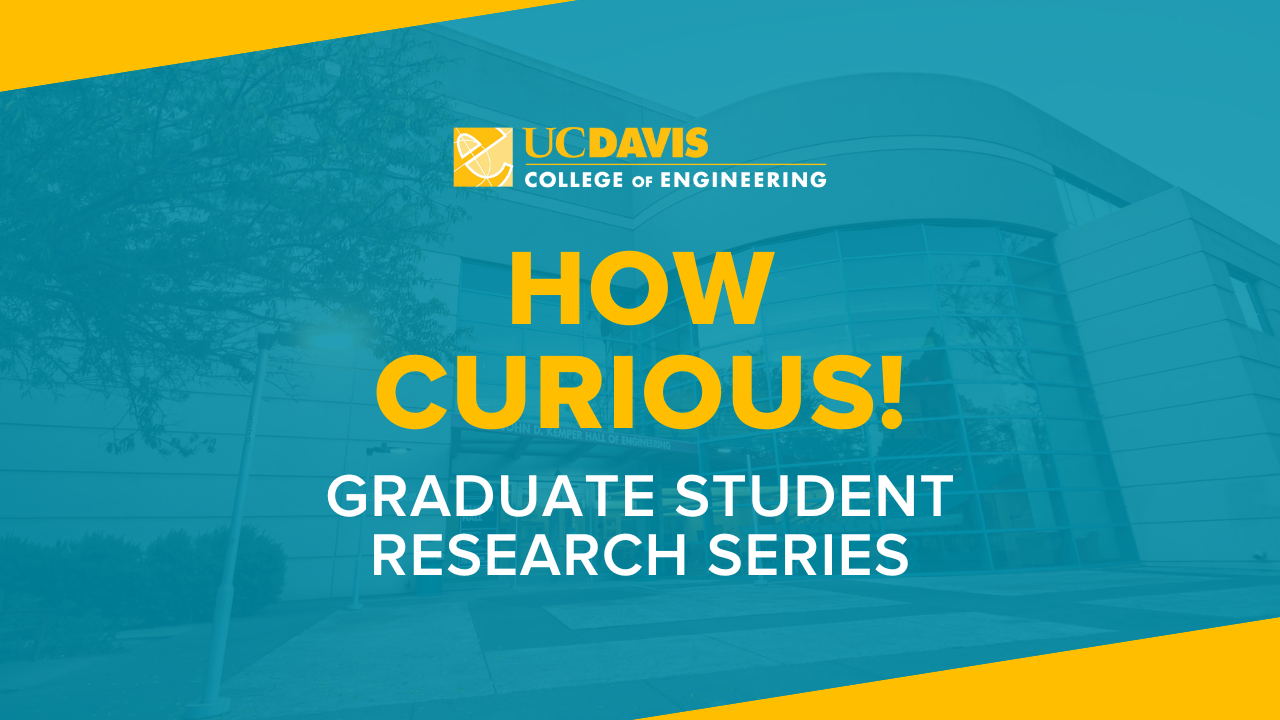
Event Date
How Curious! offers graduate students in master's and Ph.D. programs in the College of Engineering an opportunity to present their research findings and engage in scholarly discussions with their peers and faculty members. The goal is to foster collaboration, encourage intellectual exchange and support the professional development of our graduate student community.
Presenters
Peifen Lyu, Materials Science and Engineering
Presenting: Magnesium: a Burgeoning Material for Sustainable Photonics
Structural color generation exploiting nanophotonics or plasmonic behaviors has burgeoning applications in displays, sensors, and other optical sources due to promising advantages such as durability, environmental friendliness, and compatible integration with monolithic fabrication compared to traditional pigments. Magnesium (Mg) as an earth-abundant and CMOS compatible material adds more opportunities for sustainable photonics as it dissolves in water through a green chemical reaction. The present work proposes Mg-based transient color filters made from two metal-insulator-metal (MIM) stacks, interconnected in tandem. Our devices successfully display distinctive hues across the CMY reflective color gamut. When immersed in water, the first vivid colors of the device can vanish within ~40 seconds for security and protection of optical information. In contrast, the second device incorporates an ultrathin a-Si absorbing layer and exhibits a spectrally selective and tunable near-unity resonant absorption, which can generate characteristic colors covering all the primary RGB and CMY color spaces. Further exposure to water can dissolve the Mg-containing layers and the remaining structures are ready for reconfiguration. This irreversible transient color change process is easy to operate and highly scalable with a zero-power consumption, offering new opportunities for next-generation transient, CMOS compatible, and low-cost photonic devices for color displays and related optoelectronic applications.
Bio: Peifen Lyu is currently a fifth-year Ph.D. candidate in the Department of Materials Science and Engineering at the University of California, Davis, advised by Prof. Marina S. Leite. Her current research interest covers fundamental and applied research on functional materials, including novel photonic and plasmonic materials for superior optical performance. Her research has been published in top-tier venues such as Optics Express, Advanced Optical Materials, and ACS Applied Optical Materials and presented at conferences (MRS Spring and Fall meetings, SPIE Optics+Photonics, etc.). She received five awards related to her research, including the 2024 Materials Research Society Graduate Student Award Finalist, the 2023 College of Engineering (COE) Excellence in Graduate Student Research Award, and the 2023 and 2022 COE Summer Graduate Student Researcher (GSR) Award.
Ray Chiang, Materials Science and Engineering
Presenting: Inelastic neutron scattering predicting conjugated polymers charge carrier mobilities
Our group have already created a workflow to study the mobility of small organic materials. Our workflow using VASP to run on HPC to simulated phonons, we can get inelastic neutron scattering spectra and predict mobility. Our future plan is to expand the workflow to polymers, which are large molecules. We are thinking about using machine learning force fields in molecular dynamics.
Bio: Second year Ph.D. student of Materials Science and Engineering advised by Professor Moule.
Peyton Young, Mechanical and Aerospace Engineering
Presenting: The Effects of Limb Position and Applied Load on Hand Gesture Classification Accuracy using Electromyography and Forcemyography
State of art mechatronic upper limb prostheses are often controlled using surface electromyography sensors (EMG). These sensors are typically embedded in the prosthetic socket and measure the electrical activity of underlaying muscles to derive control signals. However, when the user moves their device in space or interacts with an object, changes in electrode contact pressure can occur that work to the detriment of consistent and effective prosthesis control. While these pressure changes may add unwanted variability for EMG control, we suggest that they offer unique information that can be captured using a control technique known as force myography (FMG). This technique utilizes multiple pressure sensors placed around a participant’s forearm to capture pressure changes which are then decoded to help classify intended prosthesis movements. Thus, the goal of this work was to investigate the feasibility of combining FMG with EMG to classify hand grasping movements in an able-bodied cohort and compare this combination to EMG and FMG alone. We used a custom EMG+FMG armband and instructed N=21 participants to grasp objects of different weights at a variety of different positions using 4 different hand grasp movements. The results illustrated that position and load affect classification accuracy together suggesting that control techniques that adapt to these changes are likely to produce more effective prosthetic control performance.
Bio: Peyton Young is a 3rd year Ph.D. candidate in the Department of Mechanical and Aerospace Engineering, advised by Dr. Jonathon Schofield. Their research focuses on the betterment of upper limb prosthesis control by utilizing changes in radial muscle forces developed during limb movement and object interaction. Peyton is also interested in investigating the comfort and fit of these devices using force developments. Peyton enjoys spikeball, rock climbing, surfing, and playing Dungeons and Dragons.
